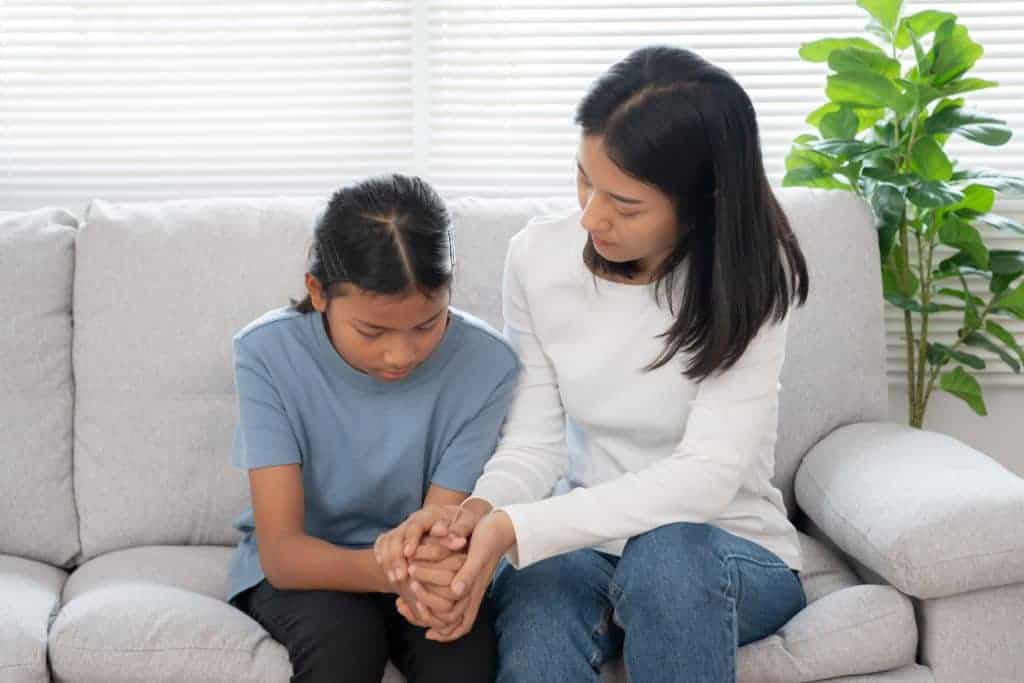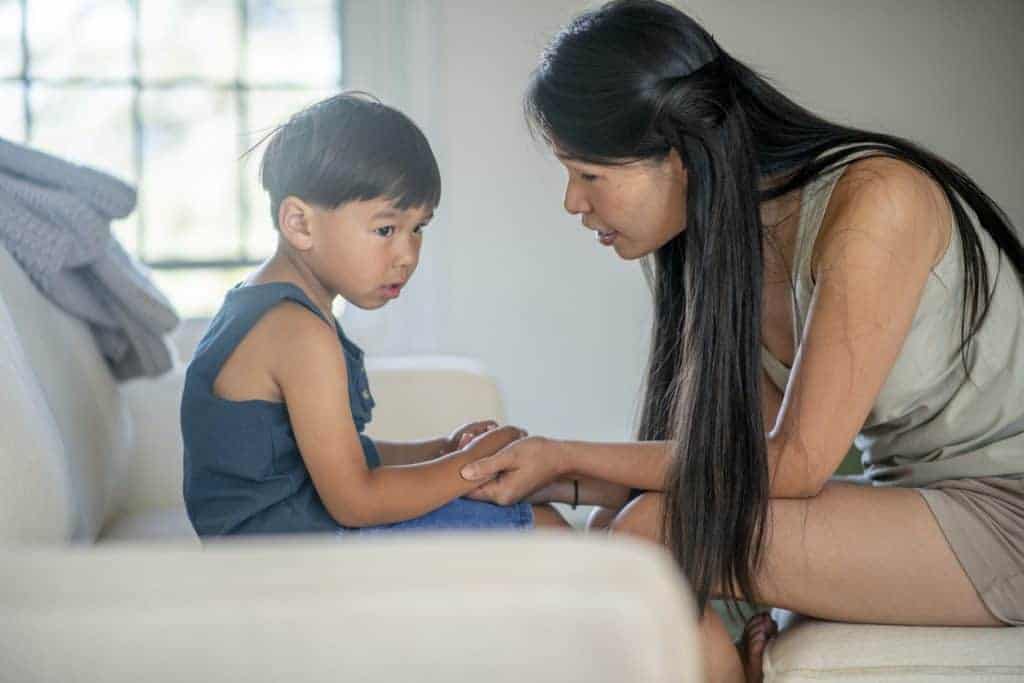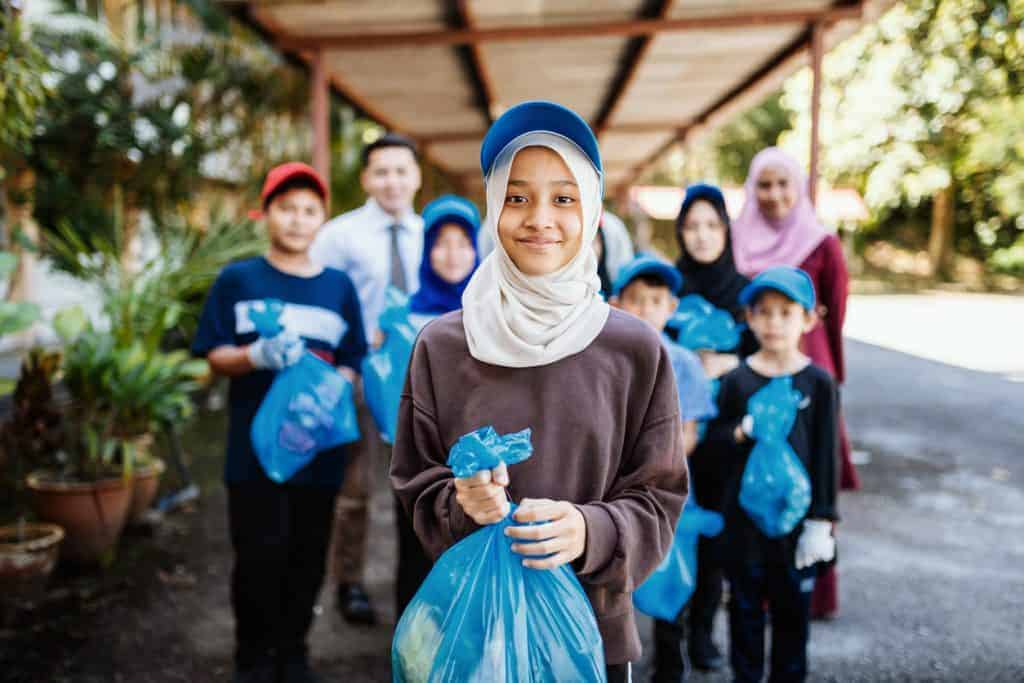
From political changes and economic struggles, to natural disasters and racial tensions, children in Malaysia are exposed to difficult news more than ever. Whether it’s unexpected tragedies that befall our nation, a global pandemic, or the abuse of our most vulnerable, we live in an increasingly tumultuous world – and navigating this news with our children can be an extremely daunting task.
How do we help them process what’s happening, without overwhelming them? Here’s how you can help your child process challenging news in a way that fosters honesty, resilience and understanding in an age-appropriate manner:
1. Create a Safe Space for Open Conversations

Children often have questions about what they hear or see. Ask open-ended questions like, “What have you heard about this?” or “How do you feel about what’s happening?” This allows you to gauge their understanding and correct any misinformation.
Avoid big reactions, even if you are surprised by what they know. Allow them to feel like they are in a safe space to share honestly and openly without fear of judgement. Approach the conversation with curiosity so they feel heard. If they catch you off guard, do not brush off the conversation. Instead explain that perhaps the time is not right and set a specific time to talk about the issue. Avoid putting it off for too long by also giving yourself enough time to prepare for the conversation.
2. Use Age-Appropriate Language

Younger children need simple and direct explanations, while older kids may require more context. For preschoolers, focus on reassurance: “Something sad happened, but people are working to help.” For primary schoolers, offer more details while emphasising safety. With younger children, parents could consider limiting the content they are exposed to on the Internet and social media. Nowadays, there are parental controls which also ensure your children remain safe online from predators. Also, be cautious about what the adults watch on television, or their own screens, when children are within earshot.
Teenagers may already be forming their own opinions, so engage them in discussions about perspectives, media literacy, and responsible news consumption. Remember, that while teenagers may appear to have some level of maturity, they do not have the same maturity of adults. In fact, the human brain does not fully mature till their mid-20’s! Therefore, encourage questions so that you can gauge their level of understanding of the issue.
3. Validate Their Feelings

Children may feel scared, sad, confused or angry. Let them know that their feelings are normal. Say things like, “It’s okay to feel worried,” or “I understand why this makes you feel upset.” Acknowledge their emotions and reassure them that they are not alone.
Avoid telling them how they “should” feel or projecting your fears on them. Let them know that they do not necessarily have to feel the same way about a situation as you do. Allow them a sense of autonomy over how they feel. Most importantly, do not shame them for feeling a certain way or shut them down. If you feel there are inappropriate feelings of negativity, use positive reinforcement to neutralise this.
4. Empower Them with Positive Actions

Feeling helpless can increase anxiety. Help children feel more in control by guiding them toward positive actions. This could be as simple as donating to a cause, making a card for someone in need, or learning about how communities support one another. During the COVID-19 pandemic, for example, some parents helped their children cope by encouraging them to write thank-you letters to frontliners, or participating in community initiatives. Encouraging kindness and empathy teaches children that they can be part of the solution.
Threading carefully with positive action is crucial. Avoid making a devastating situation such as floods that displaced families an opportunity for “show and tell” – for example, bringing them to a flood shelter and reminding them how lucky they are. In these situations, it is important to teach the values of humility and selflessness in acts of kindness. There is a fine line between acts of kindness that make us feel good and ones that truly benefit the recipients.
5. Keep the Conversation Ongoing

Difficult news is not a one-time discussion, as children’s understanding and emotions evolve over time. A young child who initially appears unaffected by distressing news may later express fears or confusion days or weeks after the event. For example, after witnessing severe flooding, a child might suddenly ask, “Will our house be washed away too?” long after the floodwaters have receded. By keeping communications open, parents can help their children process emotions at their own pace, ensuring they feel safe and heard.
Regular check-ins provide opportunities to address lingering concerns and correct any misunderstandings. If a child hears about job losses in the family, they might quietly worry about whether they will have to leave their school or home. Asking gentle questions like, “Have you been thinking about what we talked about the other day?” can help uncover hidden anxieties. Encouraging ongoing dialogue also teaches children that it is okay to ask questions and seek reassurance, building their resilience in handling difficult situations in the future.
Navigating Difficult News with Strength and Understanding

In a world filled with uncertainty, our role as caregivers is to be a steady source of support and reassurance. Whether it’s helping children understand economic hardships, political changes, or social issues, open and honest conversations empower them to face difficulties with confidence. By fostering critical thinking, compassion, and resilience, we equip them with the tools to navigate life’s challenges while holding on to hope and a sense of security. Lastly, remember that you are modelling to them what they will in turn remember as adults and potentially pass on to the next generation.
By Desiree Kaur
Desiree Kaur was in PR for over 8-years until she found her true calling in the education line. After her son was diagnosed with autism, she decided to pursue her Masters in Special Education. She enjoys writing and advocates inclusion for children of all abilities in every little way possible.










